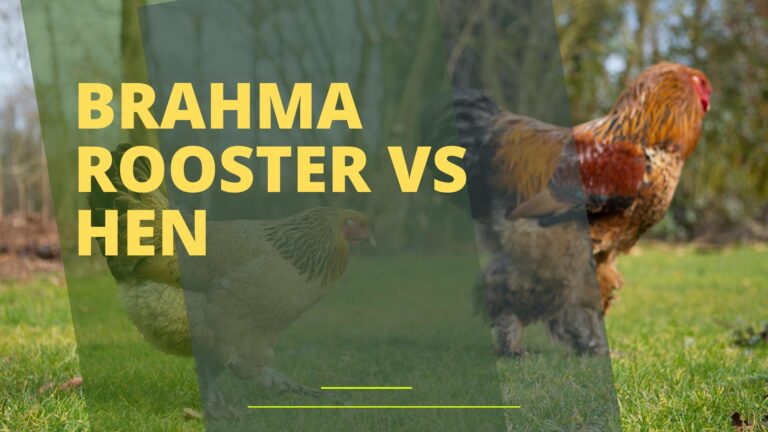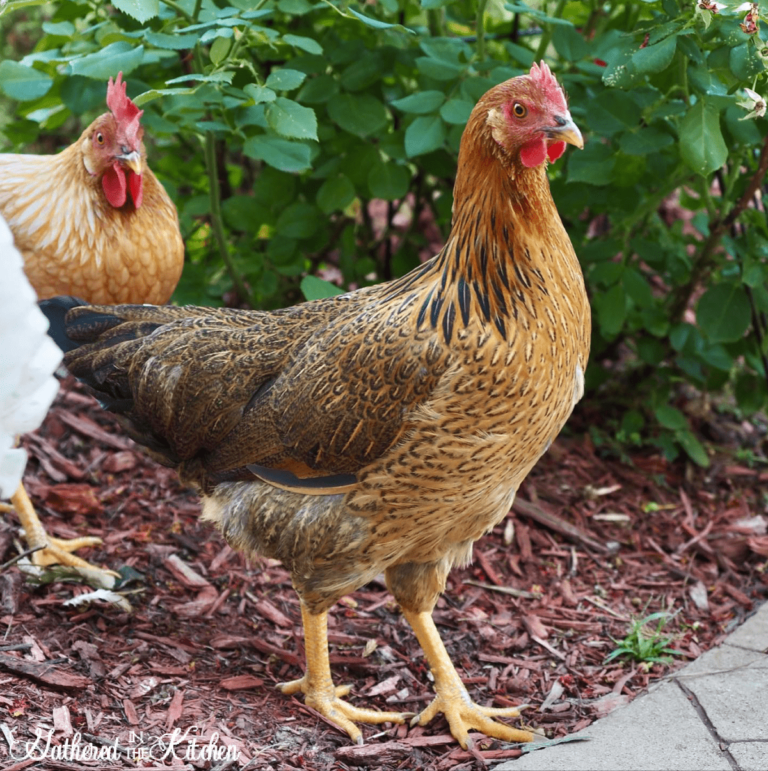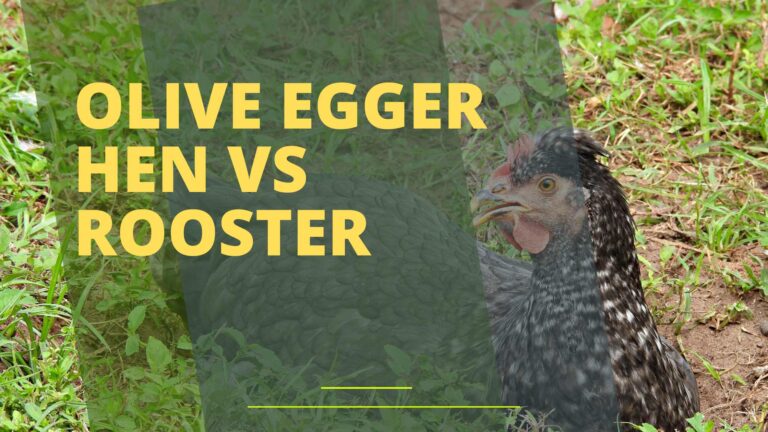White Rock Chickens are known for their meat production, while Leghorns excel in egg laying. White Rocks tend to be heavier and more docile compared to the active, prolific Leghorns.
White Rock Chickens and Leghorns hold significant places in the poultry world, each serving distinct purposes. White Rocks, with their calm demeanor and robust frame, satisfy the demand for succulent meat. They grow at a steady pace, ensuring a meaty harvest for producers.
On the other hand, Leghorns, originally from Italy, have earned their fame through incredible egg production. These birds are smaller and more energetic, often laying upwards of 280 eggs per year. Choosing between the two depends largely on whether the primary goal is meat or egg production. Both breeds contribute to the agricultural sector by providing essential poultry products, but understanding their differences is crucial for farmers and homesteaders aiming to optimize their flocks. Poultry enthusiasts often consider their environment, resources, and market needs when selecting between these two efficient and valuable breeds.
Credit: www.backyardherds.com
White Rock Chicken Origins
The White Rock chicken, a bird cloaked in snowy plumage, has roots deeply entrenched in the past. This breed, often praised for its robust nature, continues to garner attention. Its fascinating journey from origin to modern coops reveals the versatility and endurance of the White Rock.
Breed Background
The White Rock chicken, known for its dazzling white feathers, descends from the Plymouth Rock family. It emerged in the United States during the 19th century. Vital for both meat and eggs, the White Rocks quickly became farmyard favorites. Their calm temperament and strong build made them perfect for small farms and large operations alike.
Historical Significance
Dating back to the 1800s, the White Rock played a key role in American agriculture. Not only did it provide essential nutrition through its meat and eggs, but it also symbolized the era of innovation in poultry breeding. The industrial revolution saw a rise in demand for White Rocks due to their feeding efficiency and size. These chickens were among the first to be used in the broiler industry, shaping poultry farming as we know it today.

Credit: www.backyardchickens.com
Leghorn Chicken Profile
Meet the Leghorn, a bright star in the poultry world. Known for their impressive egg-laying abilities, these birds bring efficiency and vibrancy to any flock. Let’s dive into what makes the Leghorn chicken stand out.
Origins And Development
The story of the Leghorn chicken starts in Italy. From the port city of Livorno, translated to “Leghorn” in English, these birds embarked on a global journey. Bred for productivity, the Leghorn underwent further refinement in America and Britain, focusing on egg production.
- Original region: Livorno, Italy
- Selected for: High egg yield
- Development countries: USA and UK
Popularity And Spread
Leghorns won the hearts of farmers worldwide. Their ability to lay a high number of eggs made them popular quickly. Today, they’re found virtually everywhere farming is a way of life. They especially thrive in free-range systems.
| Country | Popularity Level |
|---|---|
| USA | High |
| Italy | Moderate |
| UK | High |
| Others | Increasing |
Leghorn chickens are famous for their resilience and adaptation. This quality contributes to their global presence. Their white feathered variety is especially recognized for its clean, bright appearance and prolific egg laying.
Physical Characteristics
Discovering the distinct differences between White Rock and Leghorn chickens starts with their physical features. These characteristics let you easily tell one breed from the other. Both breeds shine with unique traits that make them stand out in the poultry world. This exploration of their feather colors, patterns, and body size and shape will unveil the beauty and diversity of these popular birds.
Feather Colors And Patterns
The White Rock chicken boasts a uniform, brilliant white color across its feathers. This solid coloring is a hallmark of the breed. It reflects light, giving the birds a gleaming appearance. On the other hand, the Leghorn shows more variety in coloration. While white is common, Leghorns also come in red, black, brown and even striped or checkered patterns.
| Chicken Breed | Feather Colors | Patterns |
|---|---|---|
| White Rock | White | Solid |
| Leghorn | White, Red, Black, Brown | Striped, Checkered |
Body Size And Shape
Body size differentiates these breeds too. White Rocks are known for their sturdy, broad bodies and full plumage. They are heavier, making them excellent for meat production. Leghorns, contrastingly, have a more slender build and are lightweight. Their body shape is often described as athletic and refined, ideal for efficient egg-laying.
- White Rock Chicken:
- Heavier
- Broad body
- Full plumage
- Leghorn:
- Lightweight
- Slender build
- Athletic frame
Egg Production Capabilities
When comparing White Rock Chickens and Leghorns, their egg-laying prowess is of keen interest to many poultry enthusiasts. Understanding their capabilities in this domain is crucial for anyone considering which breed to raise. Let’s crack into the details.
Egg Color And Size
White Rock and Leghorn chickens lay eggs that differ not only in appearance but also in size.
- White Rock: These hens lay brown eggs. They tend to be large, making them a favorite for many.
- Leghorns: Leghorn chickens are famous for their white eggs. Their eggs are often of standard size, highly desired in markets.
Laying Frequency
When exploring how often these chickens lay eggs, a clear distinction emerges:
| Breed | Eggs per Week |
|---|---|
| White Rock | Approximately 4 Eggs |
| Leghorns | Up to 6 Eggs |
Leghorns are known for their remarkable consistency in egg production.
Broodiness And Mothering Abilities
The urge to hatch and mother chicks varies significantly between the two breeds. Here’s what to expect:
- White Rock: These hens may show broody behavior. They often make good mothers, tending to their chicks attentively.
- Leghorns: They are less likely to brood. Due to this, they are not typically chosen for their mothering abilities but for egg production.
Behavioral Traits Comparison
Exploring the behavioral traits of chickens adds richness to understanding these fascinating birds. In comparing White Rock and Leghorn chickens, knowing their behaviors can determine which is optimal for a backyard coop or farm. Let’s delve into the unique temperaments and adaptability of these birds.
Temperament And Sociability
White Rock chickens are known for their calm and friendly nature. They tend to be good-natured around humans, making them excellent pets. These birds often show a relaxed demeanor, rarely causing trouble within the flock.
On the other hand, Leghorns display a more active temperament. They are independent and energetic, and although not typically aggressive, they are less docile compared to White Rocks. Leghorns may not be the best handling birds for small children because of their quick movements.
Here’s a snapshot of their sociability:
- White Rock Chickens:
- Enjoy human interaction
- Mingle well with others
- Leghorn Chickens:
- Prefer independence
- May stay aloof
Adaptability To Environments
White Rock chickens are hardy birds that adapt well in colder climates. Their thick feathering provides excellent insulation against cold weather. These birds also manage reasonably well in heat, with proper shade and water.
Leghorns, originating from a Mediterranean climate, are incredibly heat-tolerant. They are energetic foragers, which makes them suited for free-range conditions. However, Leghorns may require extra care during winter months due to their lighter feathering.
A quick adaptability breakdown:
| Breed | Cold Tolerance | Heat Tolerance | Foraging Skills |
|---|---|---|---|
| White Rock | High | Moderate | Good |
| Leghorn | Low | High | Excellent |
Maintenance And Care
Welcome to the essential guide on the maintenance and care of White Rock Chickens and Leghorns. These popular breeds differ in their needs. Understanding these differences ensures a healthy, happy flock. Let’s dive into their specific requirements, from their diets to their living spaces and overall well-being.
Feeding Requirements
White Rock Chickens enjoy a varied diet. They thrive on a mix of:
- Pellets – High-quality poultry feed.
- Grains – Occasional treats like wheat or corn.
- Greens – Leafy vegetables for nutrients.
Leghorns, known for their efficiency, need:
- Layer feed – Ensures high egg production.
- Calcium supplements – Like oyster shells for strong eggshells.
- Protein-rich treats – Such as mealworms for extra energy.
Housing Needs
For White Rock Chickens, provide:
- Spacious coops – Minimum of 4 square feet per bird.
- Nesting boxes – One box for every three hens.
- Perches – A comfortable place to roost.
Leghorns prefer:
- Well-ventilated coops – Prevents respiratory issues.
- Secure fencing – They are prone to flight.
- Clean surroundings – Keeps pests away.
Health And Lifespan
| Breed | Health Checks | Lifespan |
|---|---|---|
| White Rock | Regularly check for lice, mites, and breathing. | Approx. 6-8 years |
| Leghorn | Watch for stress signs, overactivity. | Approx. 4-6 years |
Both breeds need vaccinations. These prevent common diseases in chickens. Keep an eye out for any abnormal behavior, which could indicate illness.
Economic Factors
Exploring the economic factors of poultry farming reveals the distinct aspects of White Rock chickens and Leghorns. Farmers consider costs, profits, and demands before choosing a breed. Understanding these elements can lead to better decision-making for a farm’s success.
Cost Of Rearing
When raising chickens, certain expenses stand out. Both breeds incur costs, yet their requirements differ.
- Feeding: Leghorns eat less, reducing feed expenses.
- Space: White Rocks need more space, potentially increasing housing costs.
- Healthcare: Disease resistance in either breed impacts the need for veterinary care.
Profitability And Market Demand
Profit potential might sway a farmer’s choice. It connects closely to market demand.
| Breed | Eggs per Year | Meat Yield |
|---|---|---|
| White Rock | 200-240 | High |
| Leghorn | 280+ | Lower |
Market preferences influence profitability. Leghorns shine for egg production. White Rocks are valued for their meat. Diversified farms may benefit from raising both to capitalize on varying demands.
Local trends and consumer needs also shape market demand. Leghorns dominate in areas favoring egg production. White Rocks find preference where poultry meat is in higher demand.
Choosing Between White Rock And Leghorn
Deciding on the right chicken breed for your farm requires understanding each breed’s traits. Two popular choices, White Rock and Leghorn, offer distinct benefits. This section helps you navigate the choices for your specific farming needs, whether you run a backyard hobby farm or a large-scale commercial operation. Evaluate each breed based on aspects like temperament, egg-laying capacity, and maintenance.
Best Practices For Backyard Farms
Backyard chicken enthusiasts tend to prioritize breed personalities and ease of care. White Rocks are known for their gentle nature and sturdy build, making them ideal for family farms. Leghorns stand out for their impressive egg production, albeit they can be more skittish. Below are key points to consider:
- Space: White Rocks require more space due to their size.
- Egg Production: Leghorns lay more eggs, often exceeding 300 per year.
- Feeding: Feed consumption is higher for White Rocks; Leghorns are more economical.
- Climate: White Rocks fare better in colder climates, while Leghorns prefer warmer settings.
Commercial Farming Considerations
In a commercial setting, egg yield and feed conversion ratios take precedence. The Leghorn breed is a top choice in the industry due to their high productivity and efficient feed use. Conversely, White Rocks are bred for both meat and eggs, providing a dual-purpose option. Points to compare include:
| White Rock | Leghorn | |
|---|---|---|
| Productivity | Dual-purpose | Egg-laying specialization |
| Maturity | Slower to mature | Fast to start laying |
| Feed Efficiency | Lower | Higher |
| Management | Requires more space | Easier to manage in large numbers |
Preservation And Breeding Efforts
For those passionate about heritage breeds or breeding, each chicken has its significance. White Rocks contribute to preserving a heritage breed with strong historical roots in America. Leghorns offer genetic diversity with their various color patterns and are also part of breeding programs aimed at improving egg-laying genetics. Consider these aspects:
- Heritage Value: White Rocks play a part in American farming history.
- Genetic Diversity: Leghorns help introduce varied traits in egg-laying breeds.
- Breeding Goals: Choose based on your focus on egg production or breed preservation.
Select the breed that aligns with your goals, and supports sustainable agriculture. Remember that each chicken has its place in the poultry world, providing value in different ways. Choose wisely and nurture your flock for optimal results.
Credit: www.backyardherds.com
Conclusion
Deciding between White Rock chickens and Leghorns hinges on your needs. White Rocks are robust, friendly birds, ideal for cold climates and those wanting a steadier, calmer breed. Leghorns shine in egg production and adaptability to warmer regions. Your choice should align with your space, climate, and egg expectations.
No matter your pick, both breeds offer unique advantages to any flock. Ready to make an informed decision? Delve into the world of poultry with confidence, keeping your specific requirements in mind.





